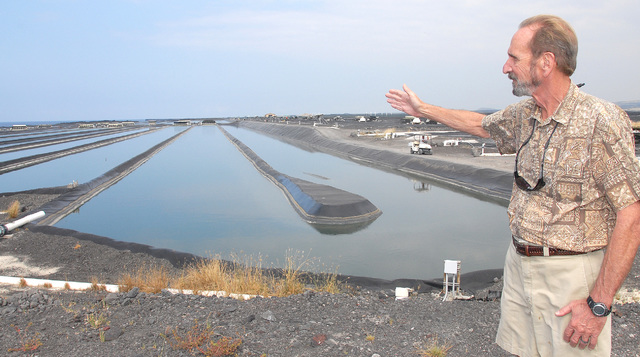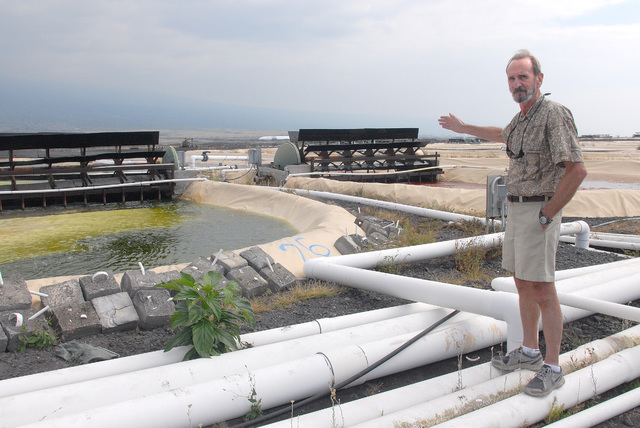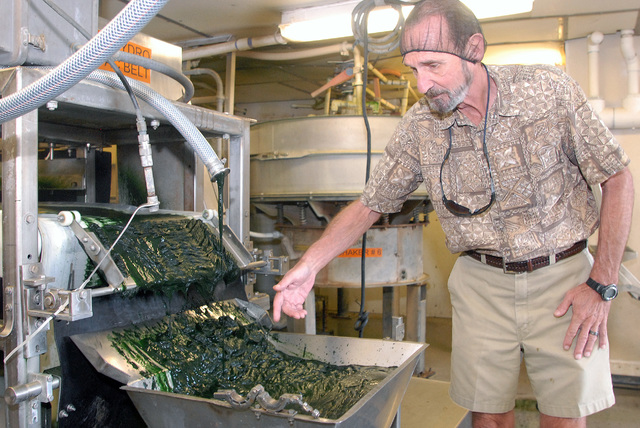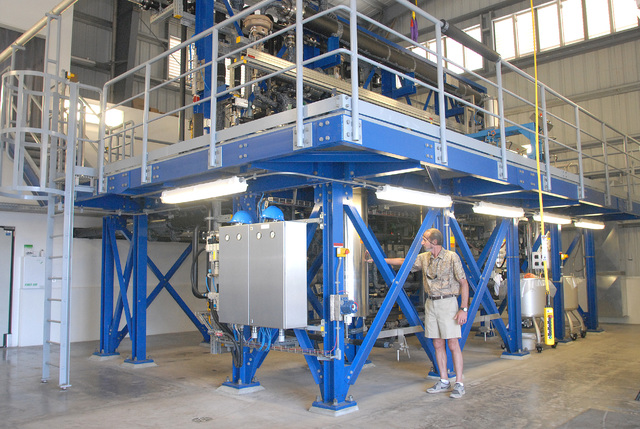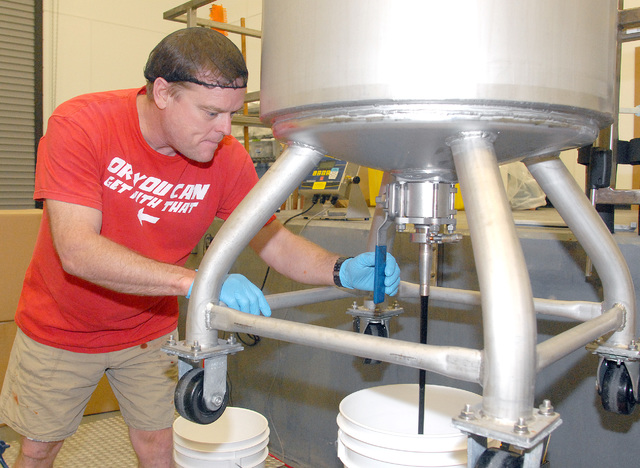KAILUA-KONA — Exports of businesses at Natural Energy Laboratory of Hawaii Authority played a major role in Hawaii’s aquaculture record-high sales in 2014, the ocean science and technology park’s executive director said.
Hawaii’s aquaculture sales totaled $78.2 million in 2014, a 40.4 percent increase from 2012, the U.S. Department of Agriculture’s National Agriculture Statistics Services and the state Department of Agriculture reported in November. Data for shellfish and finfish was withheld and included in the “other” category, along with ornamental fish, which combined accounted for just over $45 million of the sales. Algae contributed $33.1 million and accounted for about 42.3 percent of aquaculture sales.
Greg Barbour, who oversees the state-administered facility, said a good part of the surge in sales could be attributed to products produced by the facility’s 40 tenants, including Shrimp Improvement Systems, a broodstock shrimp producer that works with companies in Asia and the Americas, and Cyanotech, producer of algae and astaxanthin products.
“That’s us — there’s no one else in Hawaii producing algae commercially,” said Gerry Cysewski, chief science officer and executive vice president at Cyanotech.
Cyanotech, which started in 1984 on 5 acres and now covers 90 acres and employs 125 people, 109 of whom are located on the Big Island, is seeing increases in exports and domestic sales of its Hawaiian astaxanthin and spirulina products, Cysewski said. This comes on the heels of the company installing a new extraction system allowing for more of the process to be kept in Kona, as well as promoting its finished Nutrex product over bulk products.
“Last quarter, our international sales were up 108 percent, primarily due to shipments to China,” he said.
Cyanotech has been working with a distributor in China for about seven years securing the necessary approvals from the Chinese government allowing for the finished product to enter the country.
“Sales are really starting to move,” he said.
The company expects that the Chinese market will continue to grow thanks to the country having a “a huge market with a growing middle class,” he said. Cyanotech is also seeing growth domestically. After working with Costco locally for years, the wholesale retailer is now carrying BioAstin at 43 stores in Los Angeles, among other stores in San Diego and Denver.
“We’re trying to keep a pulse on the market and we are very encouraged by the outlook for the future,” he said.
The company reported its net sales in 2014 were $34 million.
A recent NELHA review of select Census export data indicates a majority of the increase in production is being exported from Hawaii outside the U.S., as exemplified by the increase in exports at Cyanotech, he said. Federal data on the fish, crustaceans and aquatic invertebrates exports, which Barbour said is generally aquaculture, valued the category at $32.5 million last year.
“When we started looking at (the data), the aquaculture numbers are growing significantly, exports are growing significantly and we could see a relationship between the two,” said Barbour. “We feel confident in saying that not all of it, but a significant portion of this growth in aquaculture sales and exports is from the businesses (at NELHA).”
Excluding re-exports like aircraft, mineral fuel and oil (which accounted for about a half-billion dollars in exports in 2014) and iron and steel, and Barbour said aquaculture was the state’s highest export. Beverages, spirits and vinegar, which includes bottled water, came in second to aquaculture with statewide exports valued at $20.8 million in 2014. NELHA is home to four water bottling companies: Kona Deep, Koyo, Destiny and Hawaii Deep Ocean Water.
“Exports are really important because it brings new money into the state,” explained Barbour. “In economic development, we always talk about how to grow exports. It’s good to sell something from island to island, but bringing new money into the economy really helps a lot.”
Barbour sees the growth continuing for several years as companies like Cyanotech continue to expand operations and new ventures move in to the park.
The announcement of increased sales and exports follows the March release of an economic impact study, which is issued every three years, for NELHA. The report, compiled by the University of Hawaii, estimated NELHA had $123 million in economic impact on the state in 2013, a 40 percent increase from 2010 when the park’s economic impact was estimated at $87.7 million.






